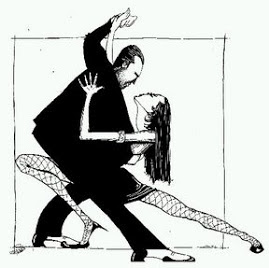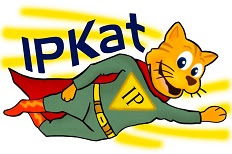Richard N. Brown (De Sola Pate & Brown Abogados, Caracas) has sent IP Tango this article. It makes depressing reading for the world's intellectual property fraternity.
"Venezuela has revived the 1955 Venezuelan Industrial Property Law. Venezuela was a member of the Andean Pact Community until April 22, 2006. On that date Venezuela left the Andean Pact Community. Because Venezuela’s Trademark and Patent Law was contained in the provisions of the Andean Community Decision 486, the withdrawal from the Andean Community left Venezuelan IP law in question. Decision 486 was the Andean Communities common Patent and Trade Mark Law used by Bolivia, Colombia, Ecuador, Peru and Venezuela. The Venezuelan Registrar of Intellectual Property continued to apply the provisions of Decision 486 after April 22, 2006 for all patent and trade mark matters in the absence of any order from the legislative or judicial branches of Venezuela’s Government.
However Venezuela’s Registrar of Patents and Trademarks published on September 12, 2008 a notice that as of September 17, 2008 the Venezuelan Patent and Trade Mark Office will no longer apply the provisions of Decision 486 but will begin to reapply the provisions of Venezuela’s 1955 Intellectual Property law. The 1955 Law was never repealed but had been pre-empted in most aspects by the Decisions 313 and 486 of the Andean Community.
Venezuela’s Copyright Law of August 14, 1992 was adopted by the Andean Community as Decision 351. Venezuela’s Registrar of Copyrights has been applying the provisions of Venezuela’s 1993 Copyright Law since April 22, 2006. The change in the Copyright Law presented no difficulties as the Laws of the Andean Community and Venezuela were identical. However the change back to the 1955 IP Law is very troublesome. Among the problems created by the move back to 1955 are the following:* The status of the Registrar's actions based on Decision 486 after April 22, 2006 is potentially open to attack
* The International classification is replaced by a sui generis 50 class system.
* Protection is limited to the class in which the mark is registered
* Service marks are not specifically protected
* No injunctions are provided for in the 1955 law
* No consents are possible
* The registration term is 15 years instead of 10 years.
* There is no grace period for renewals
* Pirate registrations become incontestable
* Pharmaceutical patents are forbidden but, since no patents have been granted in the past three years, patent protection is very limited in any event
* Only chemical processes can be patented.
* Patents of introduction are back. In the past pirates patented public domain items like bottle caps to extort licences for patents on public domain technology.
It must be pointed out that from April 22, 2006 to September 17, 2008 all the decisions and actions of the Venezuelan IP Registry were based on Decision 486. It is not clear what the effect is of the actions taken during the 21 months between April 22, 2006 to September 17, 2008 when the Registry applied Decision 486 which they now say is inapplicable.
A problem is what is the status of registrations granted between April 22, 2006 and September 17, 2008. There seems to the possibility of problems with registrations granted under terms of a law which Venezuela’s Registrar now says is inapplicable. Owners of Venezuelan registrations granted after April 22, 2006 need to consider their situation. Venezuelan Law provides that the Acts of the Government are to be held as valid. Venezuela is a member of TRIPs and the Paris Convention. Venezuela’s college of IP agents is challenging the Registers reimplementation of the 1955 law in Court. However trademark owners are in the position of persons vaccinated in April 2006 who are now informed the vaccine may or may not have been effective. The chance of successful challenge to a trade mark granted after April 22, 2006 appear to be less than ten percent because Venezuela Law provides the government acts are to be recognized. However the possibility of nuisance suits exists and, since litigation in Venezuela is very slow, problems could arise.
As an example of the problems, the 1955 law does not provide for service marks. Venezuela granted service marks from 1992 to 2008. The 1955 Act which is now in force does not provide for service marks. The Registrar has stated that service marks will be accepted in class 50 MC. How this will work is uncertain.
Great uncertainty has resulted from the Registrar's decision. In a seminar held on April 24, 2008 by the Venezuelan IP Registry the Director General of the IP Department, the economist Jumersi La Rosa said that since 2002 the Registry no longer celebrates the International Intellectual Property day because “it would celebrate the subjugation of public and salaried workers to the continued expropriation throughout history of the collected scientific techniques and intellectual wealth of human kind impending that this treasure be used to satisfy the needs of people and protection of the environment”.
Churchill, Perez Jimenez, Franco, Nehru, Krushchev and Peron were in power in 1955 Cars sprouted tail fins, Nicolas Sarkozy was born. Queen Elizabeth II was Queen –she and the 1955 Act are survivors and Venezuelan gasoline is still 12 cents (U.S) a gallon. Apart from that the world has moved on. We suggest contacting your Venezuelan associates. The new (old) classification follows:
“Article 106: The following classification for the registration of trade marks is established:
1. Raw materials or partially processed materials
2. Receptacles
3. Leather and prepared hides and other manufactured leather articles that are not clothing
4. Substances for polishing and cleaning, detergents, common soaps, candles, matches, bluing and other washing products.
5. Apparatus for use in architecture and construction
6. Chemical substances, pharmaceutical preparations, perfumery
7. Cording, sacks and analogous articles
8. Aviation apparatuses
9. Explosives, fire arms, projectiles and military harnesses
10. Fertilizers and manures
11. Dyestuffs
12. Asphalt, materials to ornament and decorate buildings, tiles
13. Hardware and iron tubes
14. Forged and cast metal, wire
15. Oils and greases that are non-edible
16. Paint and materials for painters except oils and polishes
17. Tobacco products
18. Machines and their accessories for agriculture and milk products
19. Vehicles, except locomotives
20. Linoleum, oil cloths, and similar products
21. Electric apparatuses machine and accessories
22. Toys, sporting goods and games
23. Cutlery non electrical machines and accessories, tools
24. Optical goods, photographic apparatus and accessories
25. Locks and safes
26. Scientific and measuring machines and apparatuses
27. Machines and instruments to measure time
28. Jewelry, jewels and manufactured precious metals
29. Brushes, brooms, feather dusters
30. Articles of clay, china and porcelain
31. Filters and cooling apparatuses
32. Furniture and carpets
33. Articles of glass or crystal
34. Non electric apparatuses for heating ventilation and lighting
35. Rubber goods, non metallic tires, hoses, belts and material for packing and stopping
36. Musical Instruments and their accessories
37. Paper (Except wallpaper), office supplies and blank books
38. Books and publications of all types
39. Articles of clothing, hats and footwear
40. Buttons notions, advertising material which is not a publication
41. Canes, umbrellas and parasols
42. Piece goods, cloth, embroidery braiding
43. Threads
44. Medical and dental equipment and instruments
45. Mineral and gasified waters, natural and artificial
46. Foods and their ingredients
47. Wine, except medicinal wines
48. Malt beverages, and beer
49. Alcoholic beverages
50. MC Miscellaneous
50. DC Commercial names"













